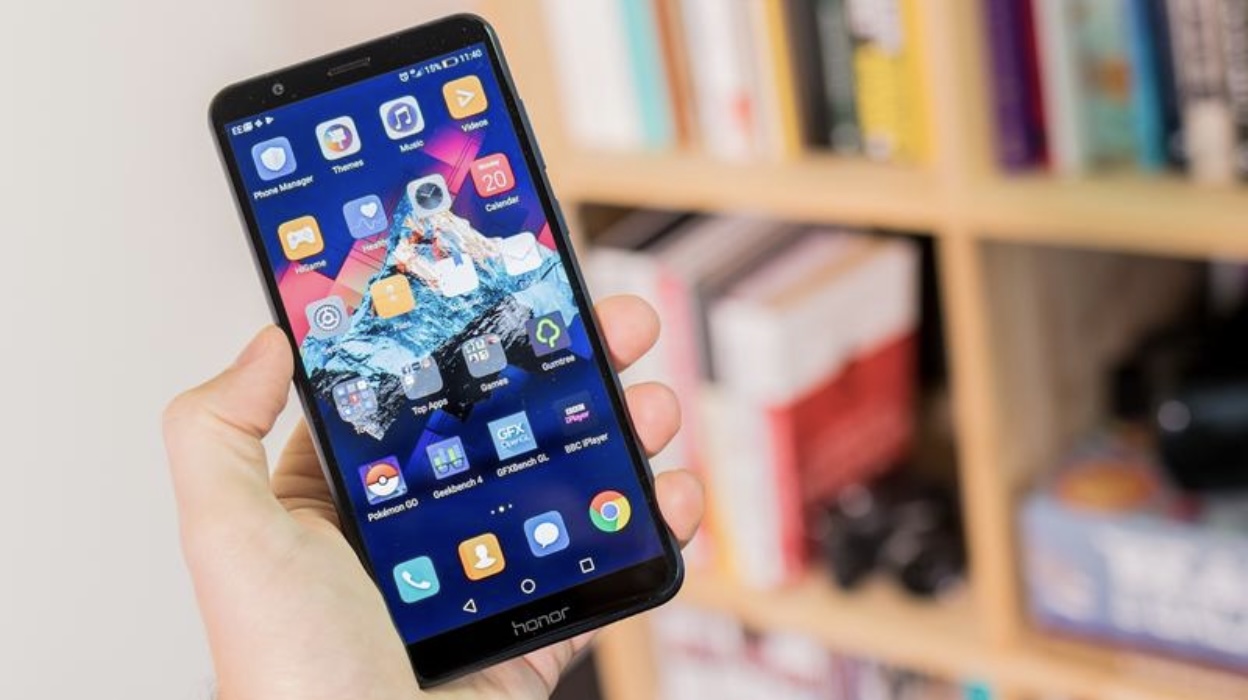Commercial message: We should start with the screen, because it is the brightest highlight. On paper, the specs – 5,93in, 18:9 aspect ratio, 2160x1080 target – might lead you to believe it's a similar presentation to the Mate 10 Pro. Be that as it may, it is not.

OLED screens are more expensive, so Honor chose an IPS v honor x7. It seems to be fine, it's an outstanding screen so far. Viewpoints are wide, overall it's pretty great, and the colors are shockingly dynamic.
Obviously, it doesn't have the option of consistently running notifications, but it actually looks remarkable with minuscule bezels and much more modest top and bottom lines than various phones at this level.
There is no place for unique peruser tags, so it is on the back in the middle. Likewise, you will be watching several cameras at the top with an LED strip. Instead of ruining the plan, the radio wires add an important touch to a generally bland area of matte aluminum.
Finish-wise, the 7X comes in dark or blue – the gold variant won't be sold in the UK.
The edge of the base reveals the standard headphone jack, receiver and mono speaker and – marginally unusual for late 2017 – a micro USB port. Maybe Honor 2018 phones will move to USB-C. Regardless, charging is easy because you can find a micro-USB connection pretty much anywhere.
Only the hole for the mouthpiece separates the top edge: the SIM plate is located at the highest point of the left side and accommodates several nano SIMs. On the other hand, in case you need more capacity, you can insert a microSD card instead of the second SIM card.
It's not unreasonable to expect some kind of waterproofing from a cheaper phone, as the Moto G5 Plus shows, but while the 7X has none of Honor's, it does make a special effort to discuss build quality. It says it has reinforced each of the phone's four corners so it's more likely to withstand drops. In any case, we recommend using a case, but not at all like with Huawei phones, which you do not get in the case of the 7X.
Specifications and designs
The specs are mid-range: Kirin 659 processor, 4GB of RAM and 64GB of storage. The last two are liberal, but generally the execution is in line with what you'd expect: this isn't a flagship gadget, nor is it intended to be.
Benchmark results show that it's not far from super-fast, but in real-world use it's downright fast. Apps may take a bit longer to ship, but they run as expected and you can run most games (like Asphalt 8 and Pokemon GO) without any problems: they won't look quite on par with much faster phones, but they've won. 't run like a slideshow we saw in GFXBench, which is designed to show the differences between the phones.
Honor works with specific designers, including Gameloft, to streamline games for the 18:9 screen so you can see more of the scene. For most games, forcing them to use the whole screen simply crops them so you really see less (similar to all 18:9 screens right now).
Battery life in our testing demonstrates the way the 3340mAh battery lasts all day with normal use, yet drains quickly, assuming you're doing something. There's no fast charging, so you'll probably be using the charger every night you hit the hay.
The main camera has a 16Mp sensor and uses PDAF for centering in a guaranteed 0,18 seconds. The following camera has a 2Mp sensor and is basically used for depth detection instead of taking photos or videos. That said, you get the very representation and wide-gap modes you'll find on the Huawei Mate 10 Pro, and the stock camera app is basically similar, save for a few key features and Leica branding.
One of them is video editing: the 7X has none. It's limited to 1080p30 recording with no 60fps option, so that puts it off a bit.
There is an 8Mp selfie camera and you can enhance the deep impact on the foggy foundations. Thanks to the movement support, you can swing and have a start for a lot of chances. In selfie mode, there is the normal perfection mode, but you can also use fun veils and effects.
Photo quality isn't stunning from the main camera. It's best in great light where photos look sharp and have great levels of detail. HDR isn't programmed, so you have to select it from the mode overview, assuming you think it's required. This was taken with HDR on a clear day, however under the same conditions we would expect the tones to be a bit warmer.